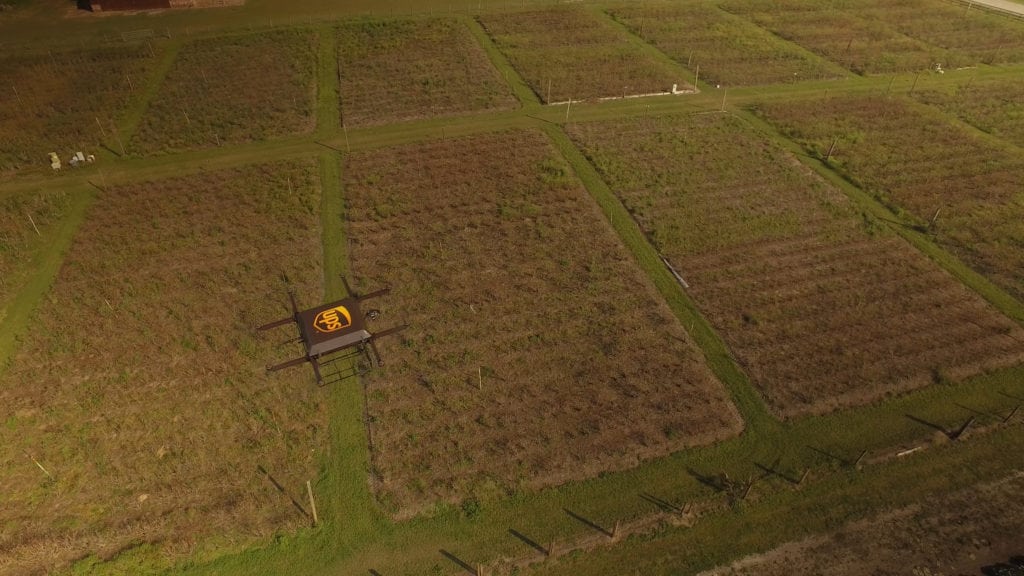
UPS tests truck-launched delivery drones in Florida
UPS has been researching the use of unmanned aerial systems (UAS) for civil applications for more than a decade. Now, the air cargo carrier is turning that research into reality.
While interested in commercial operations, UPS sees another drone application that it expects to get the regulatory green light before other areas.
“We have been active in creating partnerships with a variety of drone manufacturers so that we can learn and leverage our expertise, and leverage the expertise of some of these developers as well,” Capt. Houston Mills, director of Safety for UPS Airlines, told Avionics. “Zipline is a very innovative organization and we’ve been able to develop a partnership between them, Gavi and the government of Rwanda to leverage our expertise in logistics and be part of these innovative efforts that Zipline has created and, quite frankly, support an area that we believe is ripe for activity in the areas of humanitarian aid and disaster relief. So here’s a real-world example of an opportunity that we believe this type of technology can be leveraged, taken advantage today. And it’s actually being done.”
It was being done that day, nonetheless. As Mills and UPS Director of Autonomous Systems Jerome Ferguson spoke to Avionics Feb. 27, Ferguson said that blood was being delivered that same day.
“We are currently moving blood today,” he said. “We believe moving blood today and keeping it simple will allow us to learn as much as possible. Then ultimately we’d like to introduce vaccines in the network. “
UPS announced the project with California-based robotics company Zipline and Gavi, the global Vaccine Alliance founded by the Bill & Melinda Gates Foundation, last May. Since then, the team has been exploring the use of drones to transport medical supplies in Rwanda. Last October, Rwandan President Paul Kagame officially launched the delivery service with a primary focus of transporting blood. Zipline has a distribution center located in Rwanda’s Muhanga region, where it maintains a fleet of 15 drones, called “Zips.” Each Zip can fly upward of 93 miles roundtrip and carry 3.3 pounds of payload. The service makes 50 to 150 emergency flights each day to 21 transfusion clinics across the western half of the country.
UPS isn’t a drone manufacturer, but offers its experience in logistics, including launch sequences and commodity quantities. After all, UPS has been making deliveries for 110 years.
“We’re a company that’s been around since 1907, and we certainly understand the importance of delivering on promises to our customers. We’re a company that continues to innovate and transform ourselves over the years,” Mills said. “We take two perspectives: One is that of supporting innovation because it’s exciting and it’s new and it’s needed, but the other is taking this public trust and safety perspective with us because we know how important it is. Anything that we’re involved in, we’ll have that at the forefront.”
As for bringing this application to the U.S., that poses a few more challenges. The FAA’s regulation of civilian and commercial drone use within the National Airspace System (NAS) are more restricting than those in Rwanda. Last September, UPS teamed with drone manufacturer CyPhy Works to stage a mock emergency medicine delivery from Beverly, Massachusetts, to Children’s Island, which is about three miles off the Atlantic coast. This test worked within FAA parameters for commercial drone usage — parameters that UPS is also positioned to help shape in the future. Mills is a member of the FAA’s Drone Advisory Committee (DAC), and Ferguson is a member of its subcommittee. UPS’ drone operations comprise various parts of the company’s overall operations, like the airline, information technology and engineering.
“On one hand, we are very much innovative and very interested in the new opportunities, and certainly we want to be part of the pace. But we also understand the dynamics of safety and security codes, operating a worldwide airline, and the importance of ensuring that the same level of diligence is put in place to ensure that our unmanned system activity is successful,” Mills said. “UPS has a very unique relationship with the public. Our drivers are the face of the company and the public trusts us. So we’re very, very protective of that trust. We are able to leverage our expertise regarding the airline, and combine that with the innovative activities of what Jerome and the others in our organization are able to do, and bring that expertise to the Drone Advisory Committee in a measured way.”
Ferguson said he plans to volunteer for the Drone Advisory Committee’s (DAC) subcommittee task group focused on finances. That particular task group has not yet been given confirmed direction and is still under development. But, as was showed in the demonstration in Massachusetts, UPS is not sitting back, waiting for the FAA to create regulations. The company is considering a variety of small drone applications.
Of course, there’s package delivery. UPS recently conducted a successful test of autonomous package delivery in Lithia, Florida. Teaming up with drone manufacturer Workhorse Group, UPS launched a small drone from a delivery truck that was able to make a delivery while the driver continued en route and return to the truck. Aircraft lightening strike inspection is not off the table, either. But Ferguson said that application would require some waiting — just not for the FAA.
“In my opinion, the technology has a tremendous potential to help us with our inspections, whether it’s aircraft or whether it’s facilities,” Ferguson said. “But you know there’s still some maturity that’s needed with the technology, and we’re watching it closely, looking for an opportunity to jump in.”